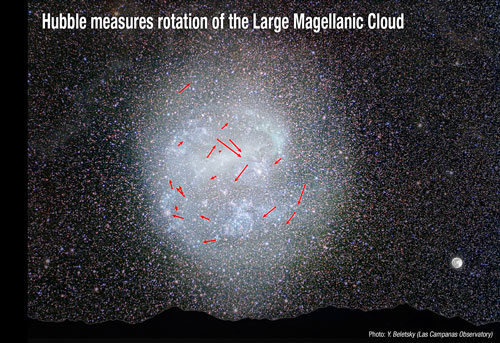 Using the sharp-eyed NASA Hubble Space Telescope, astronomers have for the first time precisely measured the rotation rate of a galaxy based on the clock-like movement of its stars.
Using the sharp-eyed NASA Hubble Space Telescope, astronomers have for the first time precisely measured the rotation rate of a galaxy based on the clock-like movement of its stars.
Feb 18th, 2014
Read more
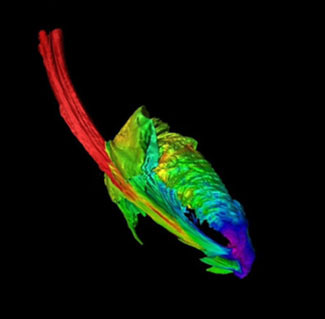 A new study explains what happens during the disruption of a normal sun-like star by a supermassive black hole. The study shows why observers might fail to see evidence of the hydrogen in the star, casting doubt on a 2012 report of the disruption of an exotic helium star.
A new study explains what happens during the disruption of a normal sun-like star by a supermassive black hole. The study shows why observers might fail to see evidence of the hydrogen in the star, casting doubt on a 2012 report of the disruption of an exotic helium star.
Feb 18th, 2014
Read more
Squinting close to the beginning of time, astronomers have discovered an association of gas-rich galaxies near the infancy of cosmic time. It's an early epoch - some 12.7 billion years ago - telling a tale that revolves around an exceptionally dusty galaxy called AzTEC-3.
Feb 17th, 2014
Read more
 Scientists on NASA's Interstellar Boundary Explorer mission, including a team leader from the University of New Hampshire, report that recent, independent measurements have validated one of the mission's signature findings - a mysterious 'ribbon' of energy and particles at the edge of our solar system that appears to be a directional 'roadmap in the sky' of the local interstellar magnetic field.
Scientists on NASA's Interstellar Boundary Explorer mission, including a team leader from the University of New Hampshire, report that recent, independent measurements have validated one of the mission's signature findings - a mysterious 'ribbon' of energy and particles at the edge of our solar system that appears to be a directional 'roadmap in the sky' of the local interstellar magnetic field.
Feb 13th, 2014
Read more
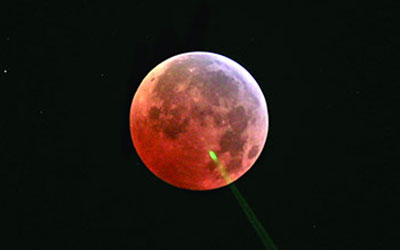 Signals bounced off reflectors on the lunar surface return surprisingly faint echoes on full moon nights. Scientists think it's the result of uneven heating of the reflective lenses, which would alter their refractive index, dispersing the return beam, and they found compelling evidence for this explanation during an eclipse as Earth's shadow passed over each reflector in turn.
Signals bounced off reflectors on the lunar surface return surprisingly faint echoes on full moon nights. Scientists think it's the result of uneven heating of the reflective lenses, which would alter their refractive index, dispersing the return beam, and they found compelling evidence for this explanation during an eclipse as Earth's shadow passed over each reflector in turn.
Feb 11th, 2014
Read more
 'Glamorous' images of the dancing lights around Saturn have been captured in greater detail than ever before, thanks to two NASA spacecraft.
'Glamorous' images of the dancing lights around Saturn have been captured in greater detail than ever before, thanks to two NASA spacecraft.
Feb 11th, 2014
Read more
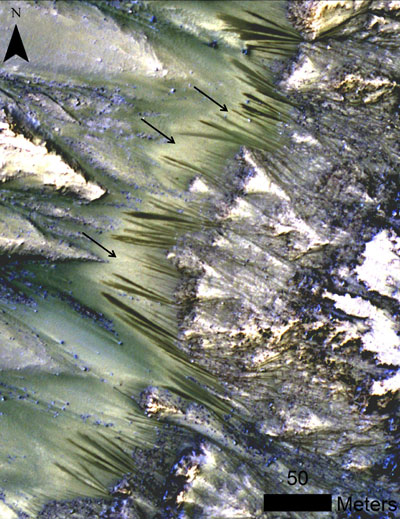 Martian experts have known since 2011 that mysterious, possibly water-related streaks appear and disappear on the planet's surface.
Martian experts have known since 2011 that mysterious, possibly water-related streaks appear and disappear on the planet's surface.
Feb 10th, 2014
Read more
Scientists have solved a major problem with the current standard model of cosmology identified by combining results from the Planck spacecraft and measurements of gravitational lensing in order to deduce the mass of ghostly sub-atomic particles called neutrinos.
Feb 10th, 2014
Read more
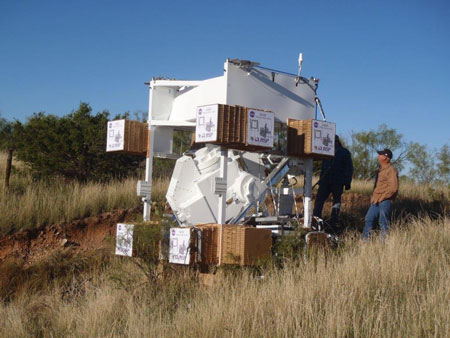 Scientists who study Earth, the sun and stars have long used high-altitude scientific balloons to carry their telescopes far into the stratosphere for a better view of their targets. Not so much for planetary scientists. That's because they needed a highly stable, off-the-shelf-type system that could accurately point their instruments and then track planetary targets as they moved in the solar system. That device now exists.
Scientists who study Earth, the sun and stars have long used high-altitude scientific balloons to carry their telescopes far into the stratosphere for a better view of their targets. Not so much for planetary scientists. That's because they needed a highly stable, off-the-shelf-type system that could accurately point their instruments and then track planetary targets as they moved in the solar system. That device now exists.
Feb 8th, 2014
Read more
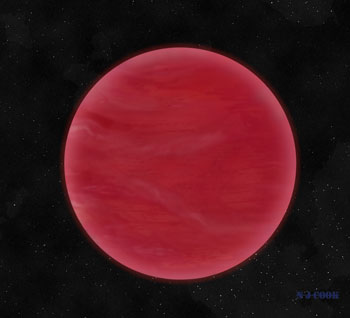 A peculiar example of a celestial body, known as a brown dwarf, with unusually red skies has been discovered by a team of astronomers from the University of Hertfordshire's Centre for Astrophysics Research.
A peculiar example of a celestial body, known as a brown dwarf, with unusually red skies has been discovered by a team of astronomers from the University of Hertfordshire's Centre for Astrophysics Research.
Feb 6th, 2014
Read more
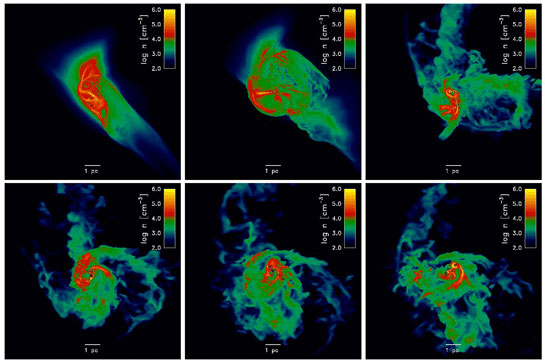 Using the Stampede, Lonestar and Ranger supercomputers, University of Texas researchers simulated the formation of the Universe from the Big Bang through the first few hundred million years of its existence. The researchers found that more realistic models of supernova blasts help explain the range of metalicity found in different galaxies. The results of the simulations will assist in guiding the James Webb Space Telescope, set to launch in 2018.
Using the Stampede, Lonestar and Ranger supercomputers, University of Texas researchers simulated the formation of the Universe from the Big Bang through the first few hundred million years of its existence. The researchers found that more realistic models of supernova blasts help explain the range of metalicity found in different galaxies. The results of the simulations will assist in guiding the James Webb Space Telescope, set to launch in 2018.
Feb 5th, 2014
Read more
A new study reveals that black holes, formed from the first stars in our universe, heated the gas throughout space later than previously thought. They also imprinted a clear signature in radio waves which astronomers can now search for. The study is a major new finding about the origins of the universe.
Feb 5th, 2014
Read more
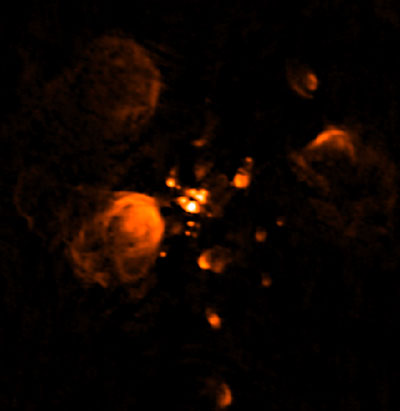 Some 30 years ago, astronomers found that regions of ionized gas around young high mass stars remain small (under a third of a light-year) for ten times longer than they should if they were to expand as expected in simple models. Recent supercomputer simulations predicted that these regions actually flicker in brightness over this period rather than grow continuously.
Some 30 years ago, astronomers found that regions of ionized gas around young high mass stars remain small (under a third of a light-year) for ten times longer than they should if they were to expand as expected in simple models. Recent supercomputer simulations predicted that these regions actually flicker in brightness over this period rather than grow continuously.
Feb 5th, 2014
Read more
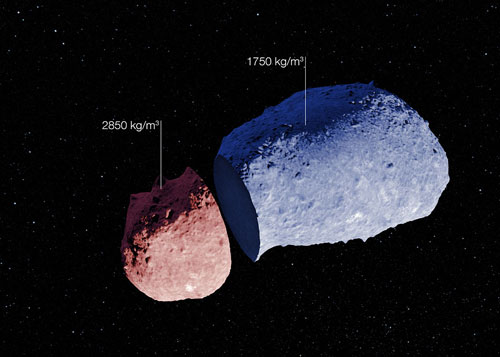 ESO's New Technology Telescope has been used to find the first evidence that asteroids can have a highly varied internal structure. By making measurements astronomers have found that different parts of the asteroid Itokawa have different densities. As well as revealing secrets about the asteroid's formation, finding out what lies below the surface may also shed light on what happens when bodies collide in the Solar System, and provide clues about how planets form.
ESO's New Technology Telescope has been used to find the first evidence that asteroids can have a highly varied internal structure. By making measurements astronomers have found that different parts of the asteroid Itokawa have different densities. As well as revealing secrets about the asteroid's formation, finding out what lies below the surface may also shed light on what happens when bodies collide in the Solar System, and provide clues about how planets form.
Feb 5th, 2014
Read more
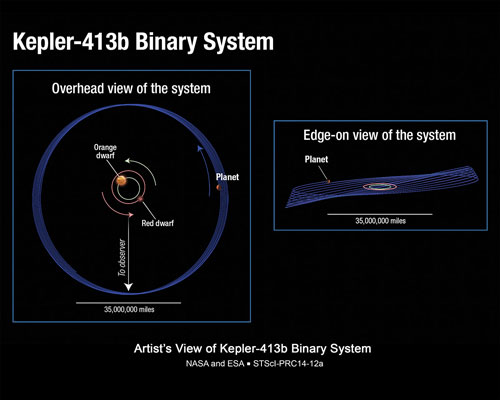 Imagine living on a planet with seasons so erratic you would hardly know whether to wear Bermuda shorts or a heavy overcoat. That is the situation on a weird, wobbly world found by NASA's planet-hunting Kepler space telescope.
Imagine living on a planet with seasons so erratic you would hardly know whether to wear Bermuda shorts or a heavy overcoat. That is the situation on a weird, wobbly world found by NASA's planet-hunting Kepler space telescope.
Feb 4th, 2014
Read more
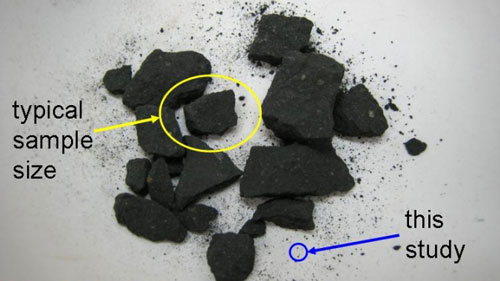 While the origin of life remains mysterious, scientists are finding more and more evidence that material created in space and delivered to Earth by comet and meteor impacts could have given a boost to the start of life. Some meteorites supply molecules that can be used as building blocks to make certain kinds of larger molecules that are critical for life.
While the origin of life remains mysterious, scientists are finding more and more evidence that material created in space and delivered to Earth by comet and meteor impacts could have given a boost to the start of life. Some meteorites supply molecules that can be used as building blocks to make certain kinds of larger molecules that are critical for life.
Feb 4th, 2014
Read more
 Fruit flies bred in space are offering scientists a clue as to how astronauts' immune systems may be damaged during prolonged space travel.
Fruit flies bred in space are offering scientists a clue as to how astronauts' immune systems may be damaged during prolonged space travel.
Jan 31st, 2014
Read more
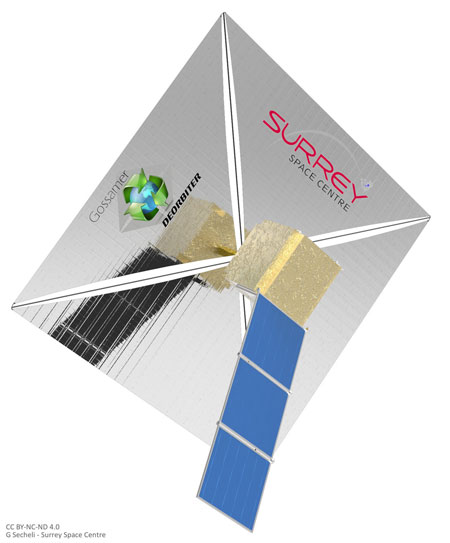 The gossamer deorbiting system is designed to automatically orient the sail in the direction where maximum drag can be achieved, ensuring quicker deorbiting. Furthermore, the sail is made reflective, which allows it to make use of the solar radiation pressure to manoeuvre; solar sailing, so to speak.
The gossamer deorbiting system is designed to automatically orient the sail in the direction where maximum drag can be achieved, ensuring quicker deorbiting. Furthermore, the sail is made reflective, which allows it to make use of the solar radiation pressure to manoeuvre; solar sailing, so to speak.
Jan 31st, 2014
Read more
 Using the sharp-eyed NASA Hubble Space Telescope, astronomers have for the first time precisely measured the rotation rate of a galaxy based on the clock-like movement of its stars.
Using the sharp-eyed NASA Hubble Space Telescope, astronomers have for the first time precisely measured the rotation rate of a galaxy based on the clock-like movement of its stars.
 Subscribe to our Space Exploration News feed
Subscribe to our Space Exploration News feed












